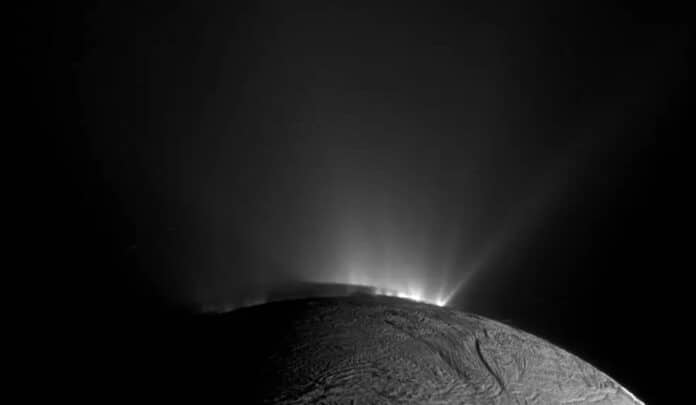NASA Finds 17 Planets Outside Our Solar System that Might Have Oceans and Geysers. Scientists think there could be water under the icy surface of these planets, and sometimes, it might shoot out like geysers. This is the first time they’ve figured out how much geyser activity could happen on these planets. They even found two planets close enough where we might see signs of these eruptions with telescopes.
When scientists look for life in the Universe, they usually check planets in a star’s “habitable zone,” where temperatures suit liquid water. However, a planet far and cold might still have an ocean under an icy surface if it gets enough heat from within. Similar to Europa (Jupiter’s moon) and Enceladus (Saturn’s moon) in our solar system, which have subsurface oceans heated by gravitational forces from their host planets and nearby moons.
They could support life if these subsurface oceans have the right conditions, like an energy source and essential elements for biological molecules. On Earth, entire ecosystems are thriving in the ocean’s dark depths near hydrothermal vents. These vents provide the necessary energy and nutrients for life to flourish.
Dr. Lynnae Quick of NASA‘s Goddard Space Flight Center in Greenbelt, Maryland, said, “Our analyses predict that these 17 worlds may have ice-covered surfaces but receive enough internal heating from the decay of radioactive elements and tidal forces from their host stars to maintain internal oceans.”
“Thanks to the amount of internal heating they experience, all planets in our study could also exhibit cryovolcanic eruptions in the form of geyser-like plumes.”
The newly confirmed exoplanets are roughly Earth-sized but less dense. The team considered conditions on these planets, suggesting they have substantial amounts of ice and water instead of denser rock.
The planets’ exact makeup is unknown, but early estimations of their surface temperatures indicate they are much colder than Earth, suggesting they might be covered in ice.
The study used Europa and Enceladus as models to improve temperature estimates, calculating surface temperature based on their known properties. The team also determined the total internal heating of these planets by considering heat generated from tides and radioactive activity. These estimates helped gauge the thickness of the ice layer on each planet, as the surface cools and freezes while the interior stays warm. Comparisons to Europa were made, and geyser activity on Europa was used as a baseline to estimate geyser activity on the exoplanets.
The study predicts that surface temperatures on these exoplanets are colder than previously thought by up to 60 degrees Fahrenheit (about 33 degrees Celsius). The estimated thickness of the ice shell varies, ranging from about 190 feet (58 meters) for Proxima Centauri b to one mile (1.6 kilometers) for LHS 1140 b and up to 24 miles (38.6 kilometers) for MOA 2007 BLG 192Lb.
Europa’s estimated average ice thickness is around 18 miles (almost 29 kilometers). The estimated geyser activity also varies, from 17.6 pounds per second (about 8 kilograms/second) for Kepler 441b to 13.2 million pounds/second (six million kilograms/second) for Proxima Centauri b, with Europa at 4,400 pounds/second (2,000 kilograms/second).
Quick said, “Since our models predict that oceans could be found relatively close to the surfaces of Proxima Centauri b and LHS 1140 b, and their rate of geyser activity could exceed Europa’s by hundreds to thousands of times, telescopes are most likely to detect geological activity on these planets.”
Scientists could observe this activity when the exoplanet moves before its star. The water vapor from the geysers might block or dim specific colors of starlight. If there are sporadic detections of water vapor, with the amount changing over time, it could indicate the presence of cryovolcanic eruptions.
The geyser water might contain elements and compounds that can show if it can support life. Different elements and compounds absorb light in specific “signature” colors. By analyzing the starlight, scientists can figure out the composition of the geyser and assess whether the exoplanet could potentially support life.
Journal Reference:
- Lynnae C. Quick, Aki Roberge, Guadalpe Tovar Mendoza, Elisa Quintana and Allison Youngblood. Prospects for Cryovolcanic Activity on Cold Ocean Planets. The Astrophysical Journal. DOI 10.3847/1538-4357/ace9b6
